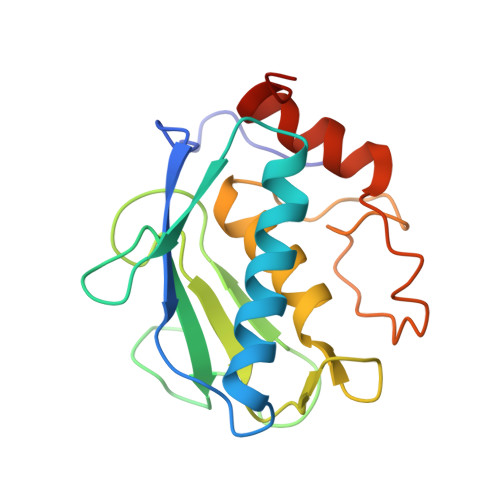Design, synthesis, and biological evaluation of matrix metalloproteinase inhibitors derived from a modified proline scaffold.
Cheng, M., De, B., Almstead, N.G., Pikul, S., Dowty, M.E., Dietsch, C.R., Dunaway, C.M., Gu, F., Hsieh, L.C., Janusz, M.J., Taiwo, Y.O., Natchus, M.G., Hudlicky, T., Mandel, M.(1999) J Med Chem 42: 5426-5436
- PubMed: 10639284
- DOI: https://doi.org/10.1021/jm9904699
- Primary Citation of Related Structures:
1D7X - PubMed Abstract:
The synthesis and structure-activity relationship (SAR) studies of a series of proline-based matrix metalloproteinase inhibitors are described. The data reveal a remarkable potency enhancement in those compounds that contain an sp(2) center at the C-4 carbon of the ring relative to similar, saturated compounds. This effect was noted in compounds that contained a functionalized oxime moiety or an exomethylene at C-4, and the potencies were typically <10 nM for MMP-3 and <100 nM for MMP-1. Comparisons were then made against compounds with similar functionality where the C-4 carbon was reduced to sp(3) hybridization and the effect was typically an order of magnitude loss in potency. A comparison of compounds 14 and 34 exemplifies this observation. An X-ray structure was obtained for a stromelysin-inhibitor complex which provided insights into the SAR and selectivity trends observed within the series. In vitro intestinal permeability data for many compounds was also accumulated.
- Department of Chemistry, University of Florida, Gainesville, Florida 32611, USA.
Organizational Affiliation:



















